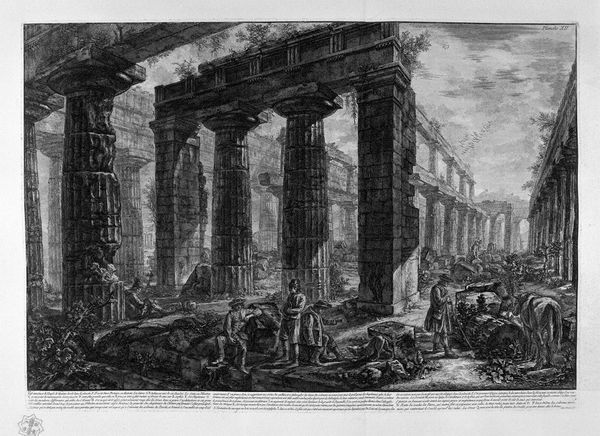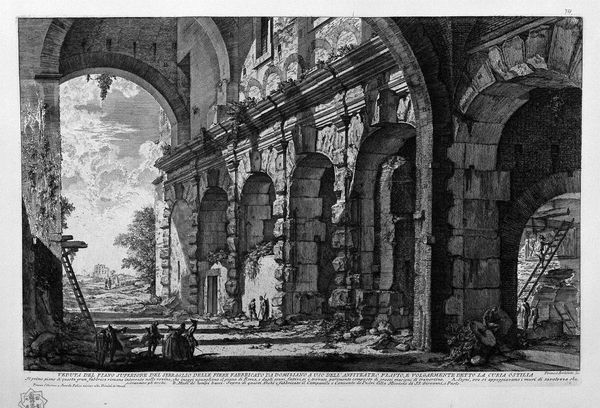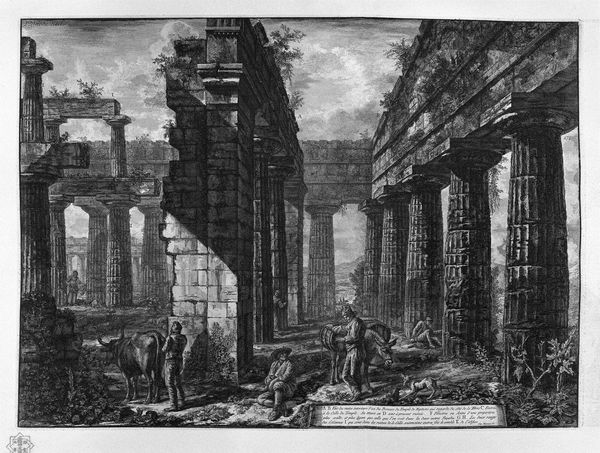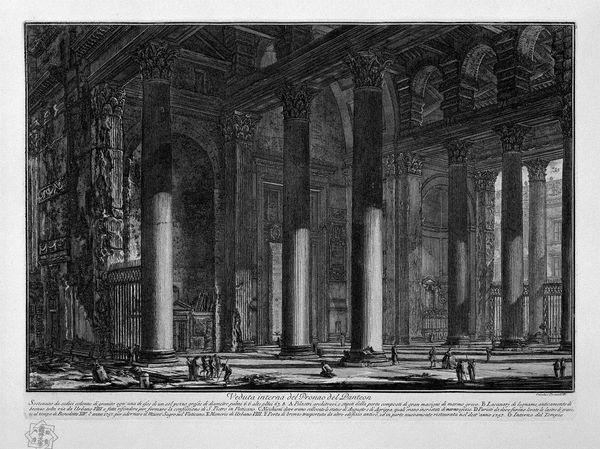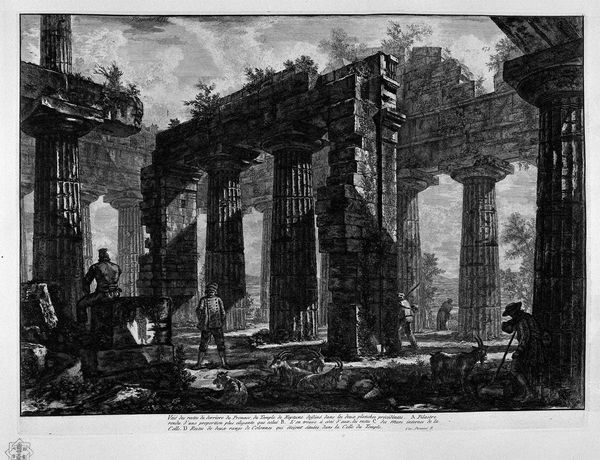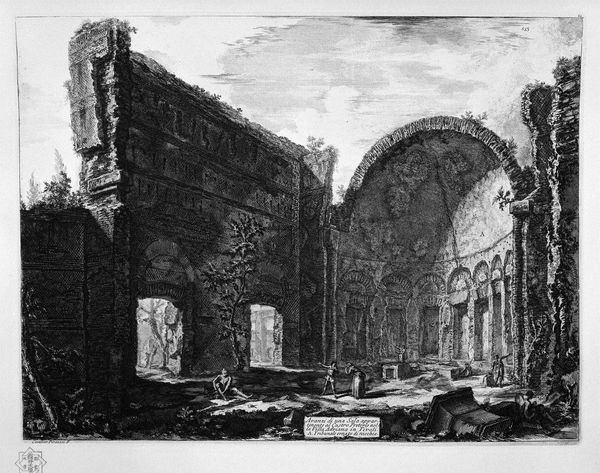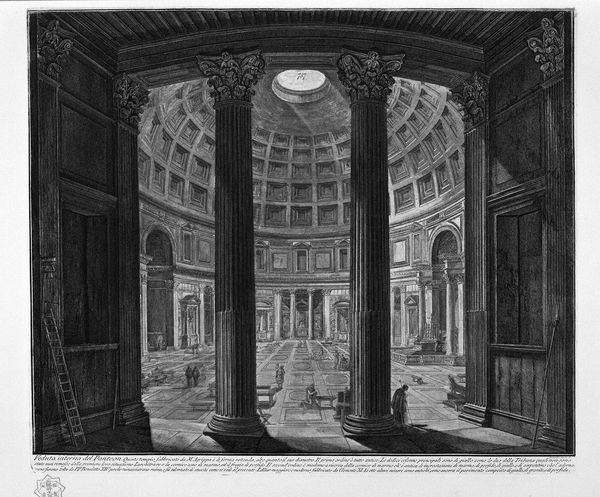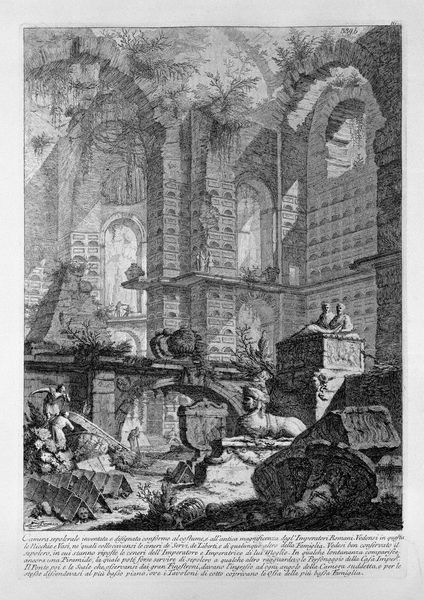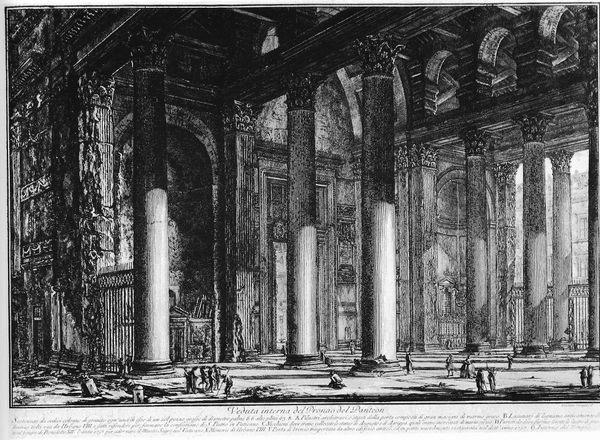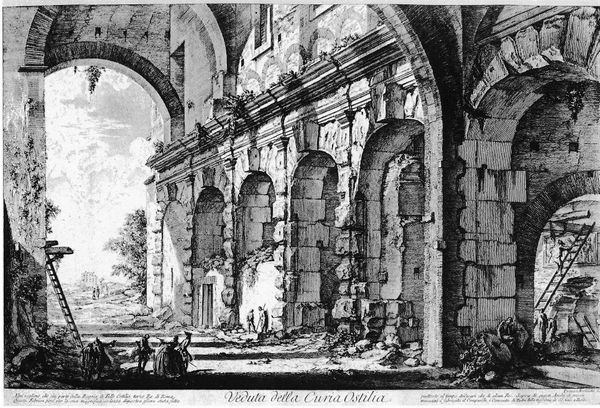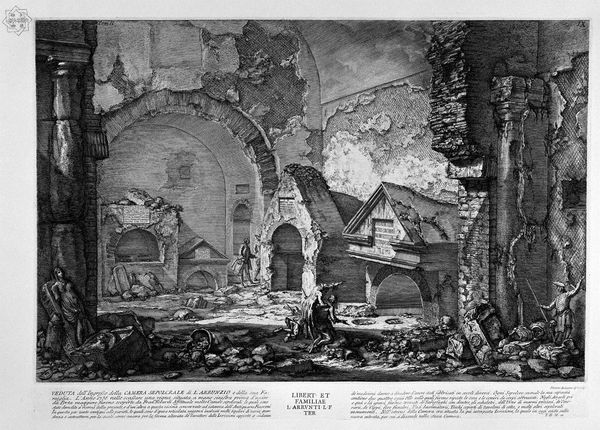
The Roman antiquities, t. 2, Plate X. View of the entrance of the burial chamber of L. Arrunzio and his Family 1756
0:00
0:00
print, engraving, architecture
#
black and white photography
# print
#
sculpture
#
landscape
#
romanesque
#
column
#
black and white
#
history-painting
#
monochrome
#
engraving
#
architecture
#
monochrome
Copyright: Public domain
Curator: I'm immediately struck by the sheer scale. The etching is in black and white and evokes a world suspended in time and decay. There's a quiet solemnity in the air, isn't there? Editor: Yes, that's certainly what Giovanni Battista Piranesi sought to capture in this 1756 print, entitled “The Roman antiquities, t. 2, Plate X. View of the entrance of the burial chamber of L. Arrunzio and his Family.” He meticulously depicted the architecture. It’s not merely a scene, but a statement. Curator: It does feel monumental, almost like a stage set for a classical tragedy. Even though it’s a print, the layers of shadow and detail almost feel like you can step right into it. You can almost smell the damp stone. It brings forth thoughts about death and the human attachment to legacy and memory. Editor: Absolutely. Piranesi's architectural fantasies reflect his anxieties about power, legacy, and the crumbling grandeur of the Roman Empire. It's more than just history. Look how he contrasts the figures of people almost overwhelmed by the scale. It reveals the insignificance of humans. Curator: Right. And the ruinous state of the chamber, with its crumbling columns and fractured sculptures… it's heavy with symbolic weight, isn't it? This ruin embodies the fate of civilization, consumed by the relentless flow of time. Editor: Precisely! The ruin functions as a commentary. Piranesi draws attention to how historical narratives and the legacies of patriarchal figures, like L. Arrunzio, are written, re-written, and inevitably fall into disrepair, mirroring broader societal shifts and the impermanence of power structures. Curator: So it is meant as a cautionary tale for aspiring powers. One day all will collapse into dust. This scene makes you reflect on life and purpose. What would it take to leave a lasting mark on the world? What truly remains over time? Editor: And the work asks us, even within such powerful ruins, who decides what stories are remembered? Whose perspectives are amplified, and whose are silenced by time? It reminds us to look critically at historical narratives, considering the marginalized voices often buried beneath the grand facades of power. Curator: Very insightful. I suppose the ruin can serve as a blank canvas, so to speak. In that sense, time isn't destructive, but liberating. A constant chance to tell new stories, adopt new identities. Editor: I agree. We might recognize that, just as empires crumble, so too can oppressive structures. This burial chamber, once a symbol of patriarchal legacy, now invites reflection on collective memory, intersectionality, and the ongoing work of reimagining power structures.
Comments
No comments
Be the first to comment and join the conversation on the ultimate creative platform.
